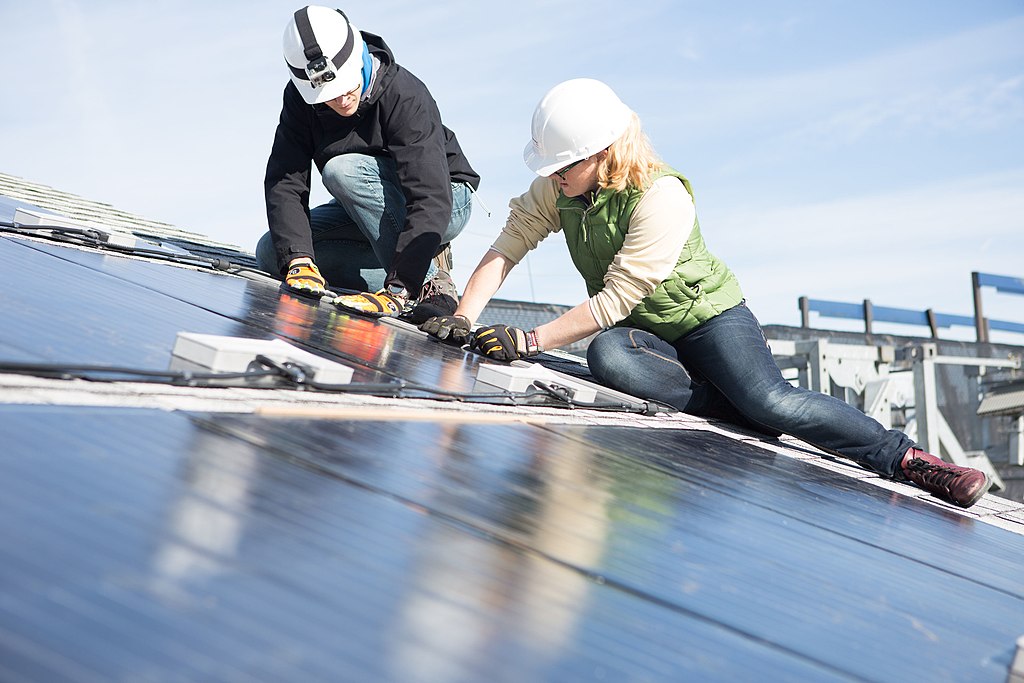This August, the Inflation Reduction Act (IRA) officially turned one year old. As you probably heard, it’s the single largest piece of U.S. climate legislation ever. In fact, the National Renewable Energy Lab expects the IRA will result in clean energy accounting for up to 90% of total U.S. power generation by 2030.
Solar is expected to be a big part of that 90%. The solar incentives in the IRA might start with the extension of the Investment Tax Credit (ITC) to 2032 at its original 30 percent, but they also extend to battery storage, community solar, commercial and industrial solar (C&I ) projects, and more.
But, while the IRA has provided a great framework for growth, it’s up to us in the solar industry to make sure this growth actually happens. Aurora’s Solar Industry Snapshot recently found that only 30% of solar professionals think that homeowners fully comprehend the legislation’s benefits for solar, like the extension of the ITC.
To ensure we fully realize the IRA’s potential to transform how we generate and consume energy as a society, improving homeowner education is key — and not just around the IRA. But how? We have to look at the most common interaction solar professionals have with potential customers: the sale.
The modern sales experience
As any teacher will tell you, there are a couple of important steps when trying to educate someone: Getting and keeping their attention, and giving them accurate information. This is true whether you’re selling a solar installation or teaching a first grader how to read. Of course, there is one key difference: A first grader can’t tell the teacher, “Now isn’t a good time” and close the door in their face.
Any of us who have sold door-to-door can confirm, though, that this happens quite often in the field. In a survey of 1,000 U.S. adults conducted by Dynata, a full 40% won’t even open the door when a door-to-door salesperson comes by, and only 24% claim that they would genuinely listen to a pitch. So how do we capture their attention quickly, and keep it?
A compelling proposal — one that’s delivered quickly and highlights the things they care about — is crucial to grabbing the homeowner’s interest before they close the door and head back inside. Now, what’s compelling to each homeowner will be different, so your proposal tool has to be highly customizable. But, there are some universal truths:
- Homeowners want to save money
- Homeowners want the simplest possible process
- Images speak louder than words
For example, presenting a realistic, 3D model of the house, complete with panels, can grab the homeowner’s attention. Then you can move on to educating them on all the incentives available, showing them their lifetime savings and financing options, and even detailing whether battery storage makes sense for them. This material should be presented in a compelling way, with no delays, and with plenty of captivating visuals.
Don’t forget accuracy
So, we’ve got the quick and compelling, but what about accuracy? After all, if you present information quickly, but the model isn’t accurate you’re setting yourself up for change orders and cancellations from frustrated customers.
Change orders can cause project delays — or worse, project cancellations — damaging the reputation of not just your company, but the solar industry as a whole. And, unfortunately, there’s still a perception that being quick and being accurate are mutually exclusive, and many solar companies inadvertently trade one for the other in their sales process — but that no longer has to be the case. A solar sales solution should enable you to generate professional proposals in minutes, giving sales reps 3D models and unique pricing configurations to improve homeowner trust and close the deal quickly.
Of course, fewer change orders and cancellations lead to happier customers, which goes a long way toward making sure your business gets more customers. According to the Solar Industry Snapshot, 67% agree that a solar company’s reputation is “very important” when deciding whether or not to work with them, ranking as the third most important factor when choosing an installer, behind only price and quality of products. In sum: Accurate proposals lead to happy customers, which leads to more customers.
The IRA presents a great opportunity for the solar industry — for installers and homeowners alike. Grabbing homeowners’ attention quickly and educating them accurately — both on the benefits of the IRA, and the benefits of solar in general — is crucial.
But, to reach the IRA’s full potential and goals, we have a lot of solar to sell and install. Solar installers that can most effectively educate customers — delivering compelling, accurate proposals, quickly — will have a leg up on the competition on fulfilling the IRA’s potential.

Carina Brockl is chief revenue officer with Aurora Solar. She has 20+ years of cloud technology experience at SAP AG, Salesforce.com, Box Inc. She has a background in architecting and designing organizations, building and developing teams, and driving operational efficiencies from the ground up. Successfully achieved revenue objectives in rapidly changing start-up, scale-up and enterprise business environments.
The views and opinions expressed in this article are the author’s own, and do not necessarily reflect those held by pv magazine.
This content is protected by copyright and may not be reused. If you want to cooperate with us and would like to reuse some of our content, please contact: editors@pv-magazine.com.








By submitting this form you agree to pv magazine using your data for the purposes of publishing your comment.
Your personal data will only be disclosed or otherwise transmitted to third parties for the purposes of spam filtering or if this is necessary for technical maintenance of the website. Any other transfer to third parties will not take place unless this is justified on the basis of applicable data protection regulations or if pv magazine is legally obliged to do so.
You may revoke this consent at any time with effect for the future, in which case your personal data will be deleted immediately. Otherwise, your data will be deleted if pv magazine has processed your request or the purpose of data storage is fulfilled.
Further information on data privacy can be found in our Data Protection Policy.